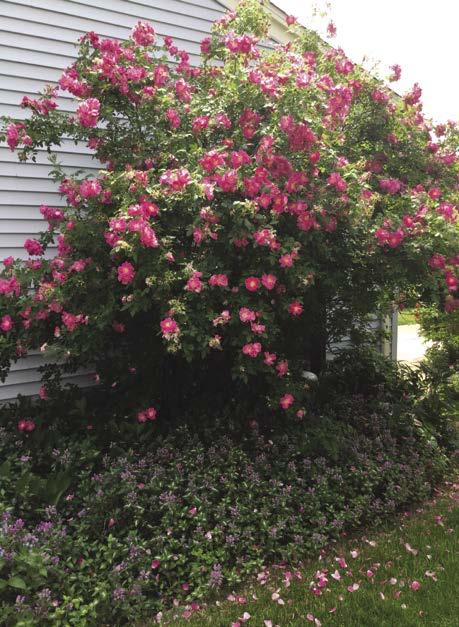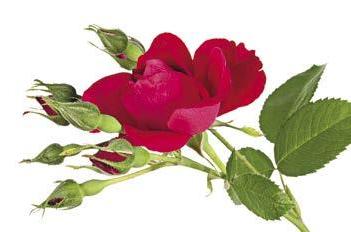
3 minute read
Garden house cleaning..............................Carol Ann Harlos
CAROL ANN HARLOS
THE SUMMER SOUND OF THE CITY


••••••••••••••• THE SONGS YOU KNOW. THE MUSIC YOU LOVE.
Featuring: Frank Sinatra Dionne Warwick Tom Jones Ella Fitzgerald Tony Bennett The Carpenters
STREAMING LIVE AT WEBRRADIO.COM
Garden house cleaning
Rambling roses Photo by Carol Ann Harlos
This year, our daughter and her fiancé cleaned our gutters. This involved not only removing “gunk,” but cutting back woody shrubs and trees that had encroached on the roof. Our soil is wonderful—everything grows well; disease and insect damage are rare. In other words, dear reader, too much of some good things means some plants had grown out of control.
I walked around our suburban property armed with pen, paper, and iPad. I took pictures of everything— not just the pretty plants, as I usually do—and decided it was time for some tough decisions and garden revision. Because of interest expressed in reader emails, I am sharing some of those decisions with you.
There was a rambling rose on the left side of the house toward the front, a beautiful sight from June to early July. Rambling roses bloom on the previous year’s growth and produce wonderful rose hips that I use to make tea (a tisane). Pruning and moving the bush proved difficult as it was “thorny” and had reached a height of about seven feet. Did you know that roses don’t have true thorns? Your scratches won’t know the difference but true thorns begin as leaf parts, while roses grow what botanists call “prickles,” which grow from the epidermis or the cortex. You wanted to know that didn’t you?
I also removed a honeysuckle thriving near the dining room window and gave it to a friend. It’s lovely when blooming but prevents the view of gardens behind the house. Moreover, I don’t remember planting it. Before you start thinking, “Carol Ann has invasive Japanese honeysuckle in her garden,” I’ll tell you it was likely the result of a plant exchange.
This honeysuckle provides an opportunity to answer two readers who asked how to tell Japanese and American honeysuckle apart: look at the leaves. Japanese honeysuckle leaves are dark green on top and

underneath, whereas American honeysuckle leaves are green on top but bluish-green underneath. (In other words, the top and bottoms are not the same color.) Other notable differences: American honeysuckle blooms from late spring to early summer and its flowers look like tubes. Japanese honeysuckle blooms all summer into late autumn and the flowers don’t form tubes. Japanese honeysuckle fruit is a black berry, while the American honeysuckle berry is red—but so many squirrels and birds eating the fruit, it can be easy to miss.
Finally, I decided to finally get rid of the two Japanese barberry (Berberis thunbergii) shrubs. They were planted years ago when we were young homeowners and, of course, they thrived. Japanese barberry is an invasive species no longer sold in New York state. Its seeds are spread by birds who favor the fruit and, when new plants grow from these seeds at the forest’s edge, they crowd out native species and provide a haven for ticks. You may be wondering what took me so long to remove them. Well, while usually I do my own pruning, Japanese barberry is formidable. Now, I have more room for plants! FY

I love hearing from you: caharlos@ verizon.net

FREE Wifi
Beauty salon Affordable Independent Living Walk-in showers Emergency pull cords Huge amount of activities Beautiful City Gardens Stay fit dining program w/ balanced hot meals 5 days a week! On Site Parking Secure Building Spectacular Patio
New Heated Sidewalks! Avoid Falls!
New COMPLETELY renovated apartments!
276 Linwood Avenue 881-1120
www.baptist-manor.org • All Faiths Welcomed








